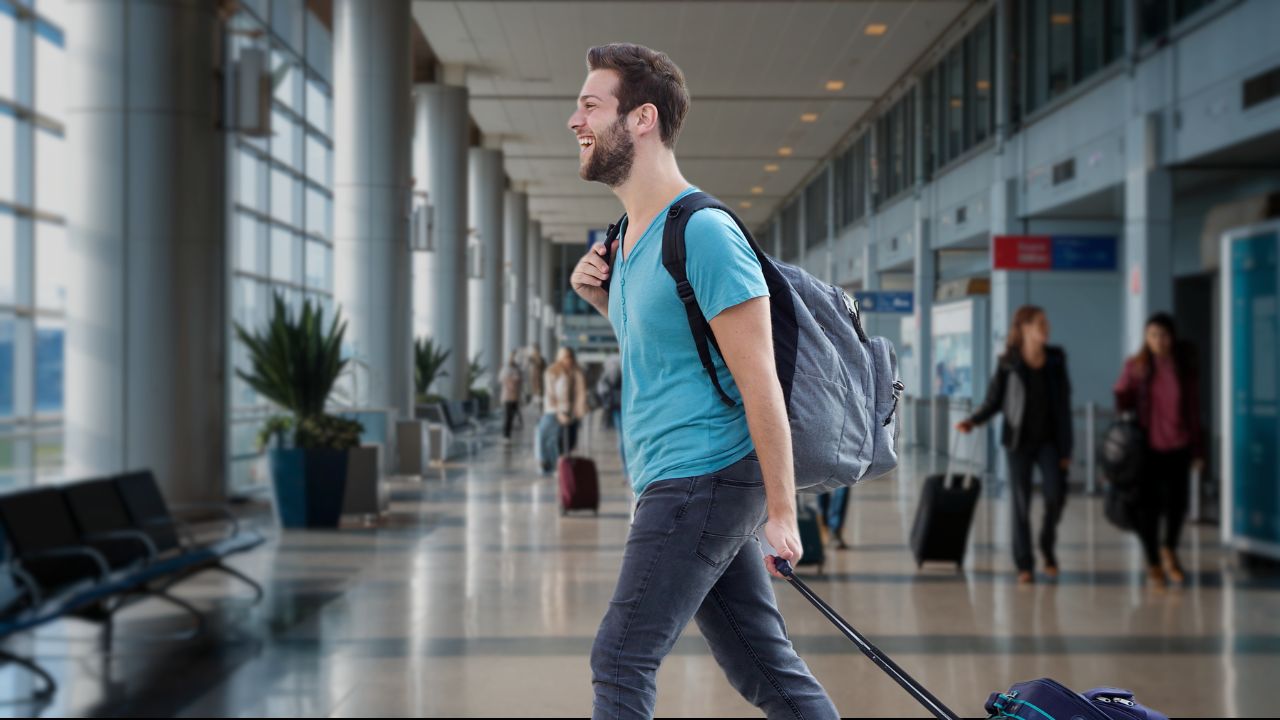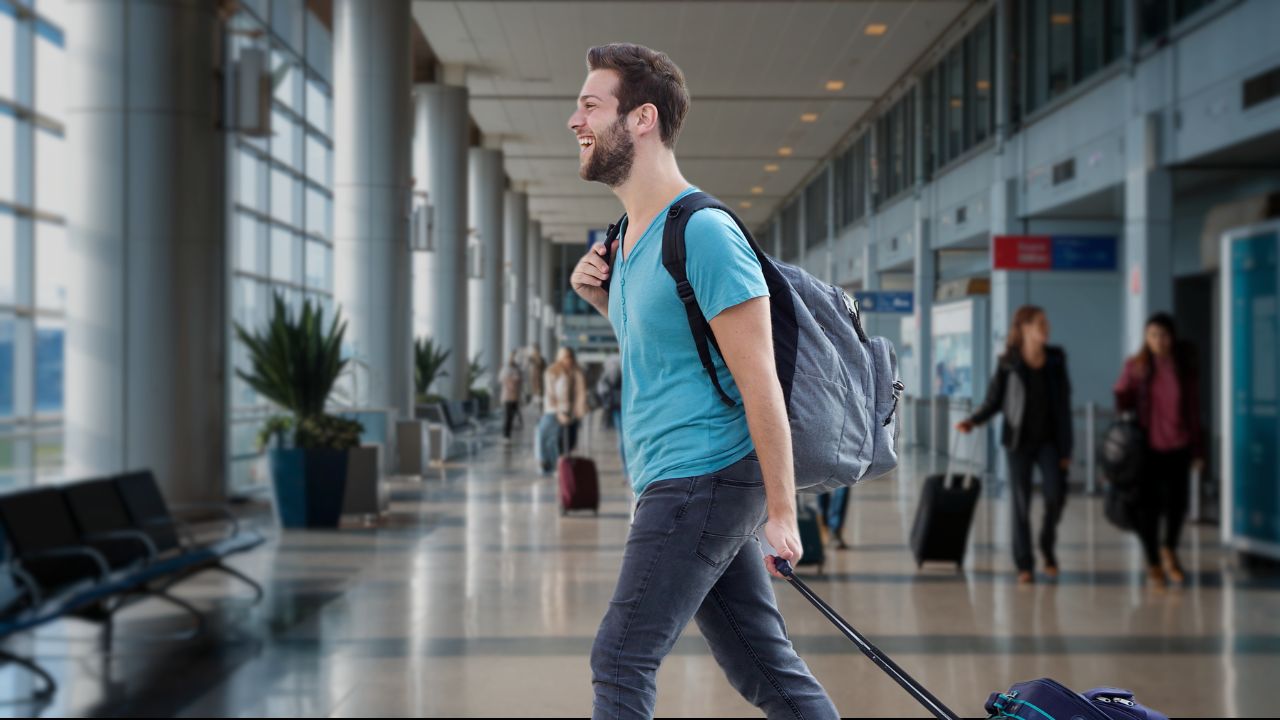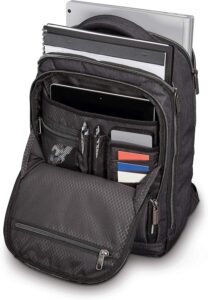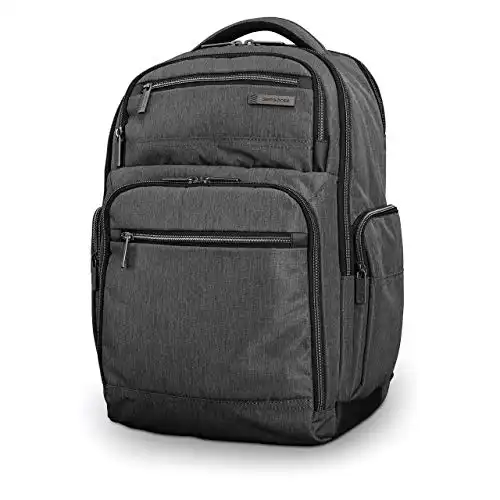

Want your laptop backpack to last longer than your laptop? A good one can easily outlive rapidly evolving electronic gear. The good news is that choosing the right laptop backpack isn’t complicated once you know what to look for. Material quality, construction methods, and a few key design features separate the bags that will protect your gear for years from those destined for early retirement. In particular, plenty of compartments, interior and exterior, will help road warriors keep their gear organized and accessible. Let’s look at how to make the right choice. The first decision is whether a laptop backpack is the right style of bag for you. [Note: Per normal, some of the product links here are affiliate links, i.e., I get a small piece of the action if someone clicks through and makes a purchase. You can trust my comments, whether positive or negative, to be my real opinion.]
Ultimate Laptop Bag Guide Home
What Are the Pros of Laptop Backpacks?
- More Comfortable. Carrying a laptop backpack without the aid of a roller/spinner bag is much easier than lugging a traditional laptop bag. The weight is well-distributed and little extra effort is required to carry even for long distances.
- Higher Capacity. Laptop backpacks come in many sizes, but their shape lets them not only hold more than a typical laptop bag but also accommodate bulkier items like cameras and water bottles. If you want to carry, say, a change of clothes then a backpack will be a better choice.
- Hands-Free. A huge advantage is that once the laptop backpack is on your back, you have both hands free to wrangle large suitcases, carry a plate of food at the airport eatery, etc.
- Adaptable for Other Uses. Even without your laptop or tech gear, a laptop backpack will work on a hike, a city tour, or other activities. I’ve used a laptop backpack on the flights to a vacation destination and then used it as a day pack while touring.
What Are the Cons of Laptop Backpacks?
- Less Professional/Formal. Most executives won’t pair a backpack with their Brioni suit. While business dress conventions continue to be more casual, a laptop backpack looks less professional and formal than a traditional laptop bag or stylish messenger bag.
- Less Organization. A few laptop backpacks have a multitude of pockets and compartments, but most offer relatively few. This can make a consistent gear storage plan more difficult.
- Less Accessibility. The capacious compartments of a laptop backpack can make finding things effortful. Once an item drops to the bottom, the user must feel around to find it or try to peer into the bag’s cavernous depths.
- More Difficult to Attach to a Carry On. Laptop backpacks often lack a trolley strap for easy attachment to a roller/spinner bag. Even when they have one, their height makes them a little less practical.
- Bulk and Maneuverability. If you’ve ever been whacked by someone’s backpack as they maneuver through a crowded space, you know this problem. Some caution is necessary to avoid bumping people, items on store shelves, etc.
- Security. Theft of items from a backpack isn’t a big issue in airports, airport lounges, business offices, etc. But if you spend some of your time on crowded city streets, particularly in tourist destinations, there’s a chance someone might try to open (or even cut open) your backpack to grab your expensive electronics. Some guides recommend switching your backpack to your front under those conditions – safer but uncomfortable.
- Height. Larger laptop backpacks are inherently taller than laptop bags. This can cause a problem with airline luggage sizers – check allowable dimensions for the airlines you fly. Most laptop backpacks fit under airline seats, but occasionally they can extend out far enough for the flight attendant to object.
What Are the Most Important Laptop Backpack Features?
It goes without saying that a laptop backpack must have good laptop protection and enough capacity to handle the gear and other essentials you travel with. If you want to carry a change of clothes or bulky camera, allow for that. Here are a few of the less-obvious features to look for.
- Exterior Pockets. There are a few items I want to be able to access without rooting through the interior of the backpack, like charging cords, sunglasses, passport, etc. Your list may differ, but having exterior pockets and pouches is a road-warrior must. Easy accessibility is particularly helpful if you are trying to retrieve something in a hurry (as when stowing the backpack in an overhead bin) or in the dark (when the backpack is under the seat in front of you in a dark airplane cabin).
- Trolley Strap/Sleeve. There will be times when you don’t want to sling the backpack over your shoulder and instead place it on your roller bag. A trolley strap or sleeve makes this much easier than trying to MacGyver the shoulder straps into a makeshift attachment. Beware – if the trolley strap opening isn’t wide enough, you might find it difficult to fit the roller bag’s handle through. My Briggs & Riley carry-on has a fairly large pull handle, and it’s a tight fit on some backpacks. If you buy a laptop backpack, check this out as soon as it arrives – don’t assume it will fit easily.
- Key Leash. Some laptop backpacks have a nylon strap inside with an easy-open ring to attach your keyring. This reduces fumbling to find your keys when you finally get home. I don’t use it for keys, but I secure a tiny dual-compatibility USB flash drive to it. (I use this to transfer presentations and other files at speaking gigs, and the two USB formats ensure I can connect to any weird computer, new or ancient, PC or Mac.) The drive is so small it’s easy to lose track of, but I can always find it with the key strap.
- Sternum Strap. This is a small strap that snaps together and connects the two backpack straps across your chest. This prevents slipping and helps distribute the load. Most backpacks don’t have one, but you can easily add an aftermarket sternum strap. The sternum strap can function as a makeshift trolley strap, too, albeit a less secure one.
- Safety Features. Depending on your level of paranoia, you might consider lockable zippers and/or RFID-blocking pockets. Few backpacks come with locks, but cable-type luggage locks will work in most cases. I don’t worry too much about these details, a bigger concern is someone stealing the entire bag. Be sure to stick an AirTag or SmartTag in an inside pocket.
Keeping all that in mind, here are our recommendations for the best laptop backpacks:
Roger’s Choice – Best All-Around
 This one is my go-to laptop backpack. It bridges the gap between business travel and recreation with a professional, uncluttered look. A couple of large exterior side pockets keep things like charging cables handy. It has a trolley strap and key strap. The front side has three zippered compartments, some of which include additional pockets and organization. One has the usual “business” slots like pen holders, business or credit card pockets, etc. The main compartment is roomy enough for bulky items like a camera, clothing or even a pair of shoes. The laptop compartment is well protected and in addition to the laptop can easily hold some files, a tablet, or other flat items. As a “personal item” on airplanes, it fits under every airline seat I’ve tried it on. (I don’t normally overstuff it.) The only minor flaw I’ve observed is that the padding on the bottom of the laptop compartment is thin. That hasn’t been an issue for me, but could be improved by adding a bit of foam or other soft material to the bottom.
This one is my go-to laptop backpack. It bridges the gap between business travel and recreation with a professional, uncluttered look. A couple of large exterior side pockets keep things like charging cables handy. It has a trolley strap and key strap. The front side has three zippered compartments, some of which include additional pockets and organization. One has the usual “business” slots like pen holders, business or credit card pockets, etc. The main compartment is roomy enough for bulky items like a camera, clothing or even a pair of shoes. The laptop compartment is well protected and in addition to the laptop can easily hold some files, a tablet, or other flat items. As a “personal item” on airplanes, it fits under every airline seat I’ve tried it on. (I don’t normally overstuff it.) The only minor flaw I’ve observed is that the padding on the bottom of the laptop compartment is thin. That hasn’t been an issue for me, but could be improved by adding a bit of foam or other soft material to the bottom.
I’ve logged 100K+ miles with this backpack and it still looks like new. Amazon reviewers tend to like it, too, scoring it 4.7 stars. Comments like, “Just the right amount of organizational pockets,” “This truly is a dream bag,” and “Sleek, roomy, durable, looks great, and TONS of pockets,” echo my own feelings. Many noted that its various pockets allow carrying multiple laptops, tablets, etc.
A High-End Choice for Professionals








